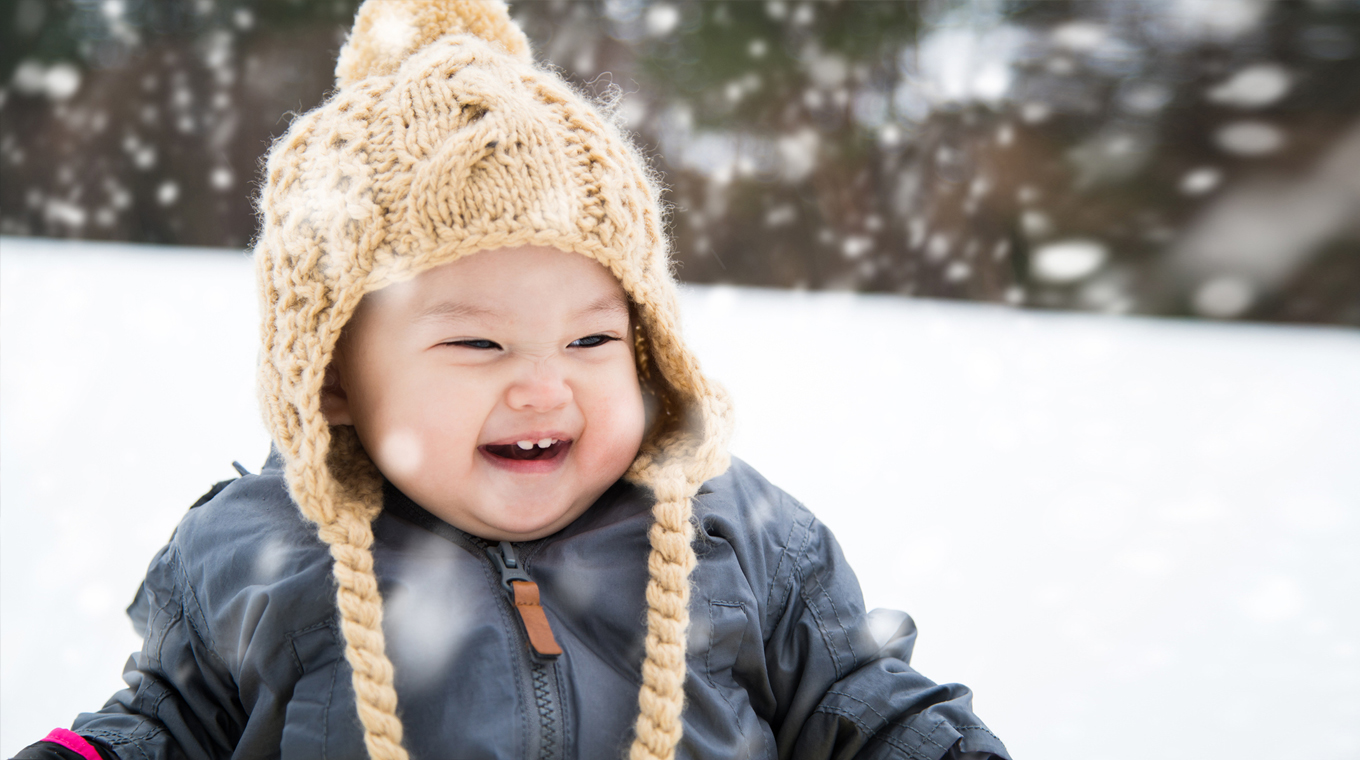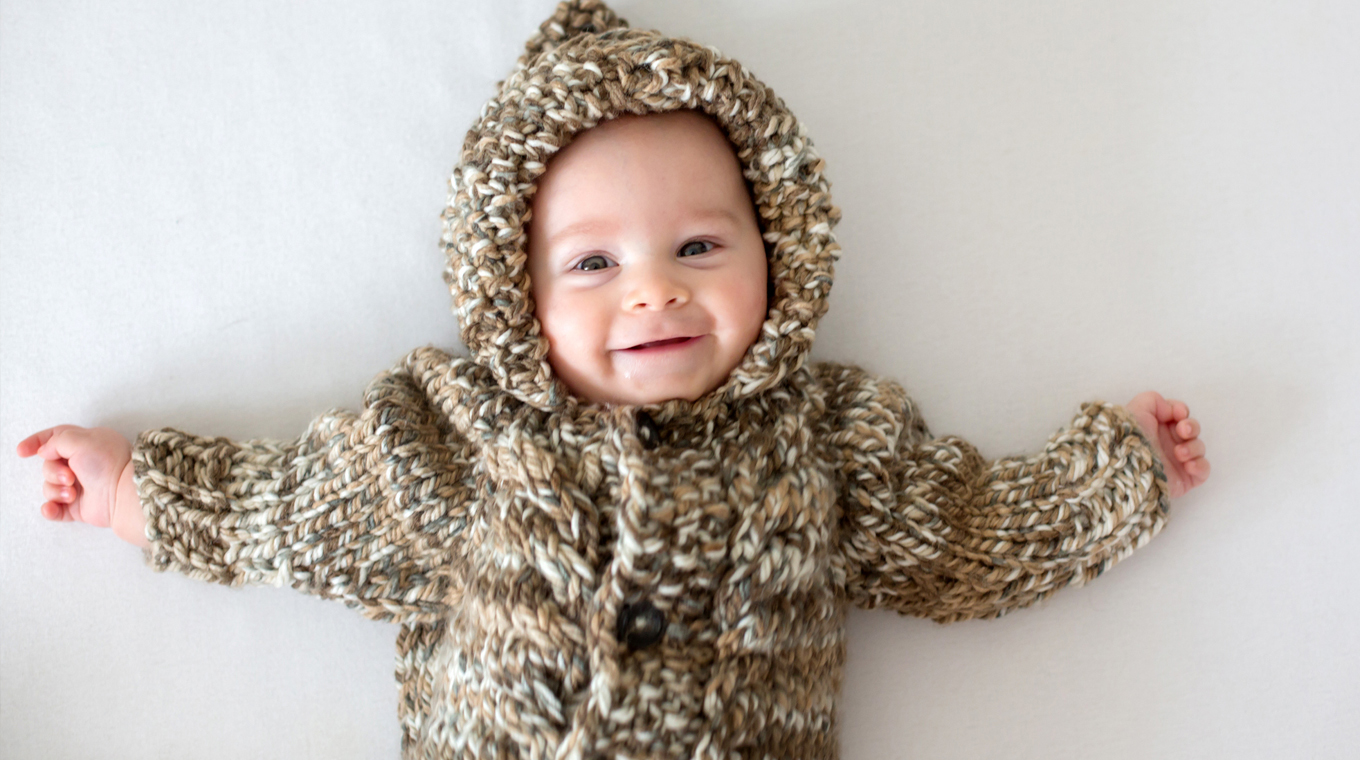In this article
When it comes to winter, the months from newborn to toddler can be a struggle for parents. With activities ranging from underwhelming to overwhelming, concerns about being too hot to too cold, and the myriad of health and safety questions in general, parents who are wondering what to do with their babies this winter season are not alone. Read on for creative (and safe) baby winter activities that make the most of this special season with your little one.
It's cold outside, baby: Indoor activities to keep busy

When the winter weather is too daunting, stay inside and enjoy these cozy activities with your baby.
Footprint snowman
Freeze this moment in time with a footprint-shaped snowman craft with your little one this winter. “Doing footprint art is easier than handprint art for babies because it’s easier to control their feet if they are strapped in their high chairs!” mom of three Larissa Yuan shared with Mom.com. “And toes don’t scrunch up as much as fingers.”
Sensory play
Touch is an important sense as your baby explores her world in order to learn. Tactile activities such as sensory bins not only entertain small children but they also provide new experiences that quench their curiosity. Allowing your child to squish play dough, splash water, and feel different textures are all considered sensory play. If you're concerned about your child accidentally eating your sensory activity(!), try edible playdough or slime.
Sticky wall
Another form of sensory play and fine motor skill development (that takes less prep and cleanup time than sensory bins and playdough) is sticky wall. “We taped contact paper to the wall, then let the kids stick pompoms and pipe cleaners to it,” Stephanie Hino, mom of three and Children’s Ministry director, told Mom.com. “They loved it.”
Play ball
"No playing ball in the house" is something many of us grew up hearing our parents yelling, but if the ball isn't too hard or heavy, there's no reason to refrain from a calm game of catch by rolling it back and forth, or gently tossing it underhand. You can also blow bubbles in your baby’s direction and watch as he or she reaches out to catch them — both help build gross motor skills and hand-eye coordination.
Puppets
Turn off the television set and put on your own show! Puppets are a fun way to entertain your children. If you have an older child, let him or her help make the puppets from old socks, markers, and fabric scraps. Then watch your child delight in making their little baby sibling laugh.
Storytime
It’s never too early to start reading to your baby. Even if your child isn't looking at the pictures, the sound of your voice is calming, and studies have shown that babies with parents who frequently talk to them acquire a wider vocabulary at a younger age.
Finger paints
Bring a little color to dreary winter days by breaking out the finger paints and getting creative with your hands. Use washable nontoxic paints, then have your child sit in a high chair to ensure easy cleanup. Turn your child’s art experiment into an art print by making a design on canvas using painter’s tape.
Snuggling
What better way to stay warm than to cuddle? Whether in front of a cozy fireplace or wrapped up together in a thick quilt, snuggling is a nice way to spend an afternoon. And if you both fall asleep, a nap is even nicer.
Cold-play with baby: Outdoor activities for the family

Sometimes you just need to get outside. Here are fun and safe ways to revel in the wonder of winter.
Get some fresh air
Just because it's cold outside doesn't mean you have to stay indoors. In many Nordic countries, parents believe the cold air makes a baby healthier. Bundle your baby up, put her in the stroller, and take a walk around the block.
Go see the snow!
Take advantage of the best that winter has to offer — snow! Even if you live in a place where you’ll have to take a mini road trip to get there, it’s still possible. Most experts agree that it is safe to travel short distances (under two hours) with a newborn baby; for longer journeys, consider waiting until your baby is at least two or three months old.
Jessica Chu, mom of three, took her 4-month-old and two elementary-age boys on a weekend snow retreat. “You don’t need much snow gear for a newborn since they won’t be playing in the snow,” Chu shared with Mom.com. “Just some outerwear that covers their hands and feet, and a warm hat. We used a convertible suit that can be worn as pant legs or buttoned up to form a sleeping-bag-like pouch. This was a great option that allowed us to transition him easily to the carrier.”
How to dress baby in winter

Whether you decide to stay inside or venture outdoors, it is important to dress your baby properly during the winter months. Parents need to be cautious of overdressing their baby as much as underdressing. According to KidsHealth.org, “Most SIDS deaths happen in babies between 1 and 4 months old, and cases rise during cold weather.”
To prevent overheating (and hypothermia as well), the general rule of thumb is to dress babies in one more layer of clothing than an adult would wear in the same conditions. "Parents and caregivers should dress infants in light clothing for sleep and keep rooms at a temperature comfortable for adults," said Alan E. Guttmacher, MD, director of the NIH’s Eunice Kennedy Shriver National Institute of Child Health and Human Development (NICHD). Even if this means waking your peacefully sleeping baby to remove her outdoor clothing after bringing her inside, it is worth it to be safe.
When outdoors, babies and young children should wear layered clothing and have their head, hands, and feet covered. Wet clothes should be changed immediately. If you have your baby in a carrier or in an stroller with the top pulled down, be sure to check periodically that your baby can breathe and that his face does not feel too cold or hot.
Enjoy this time with your little one — nothing will seem clear-cut or convenient, and there will be a million opportunities to feel like you’re not doing enough. But as long as you are paying attention to your baby, and making them feel safe and loved, you can’t go wrong.





